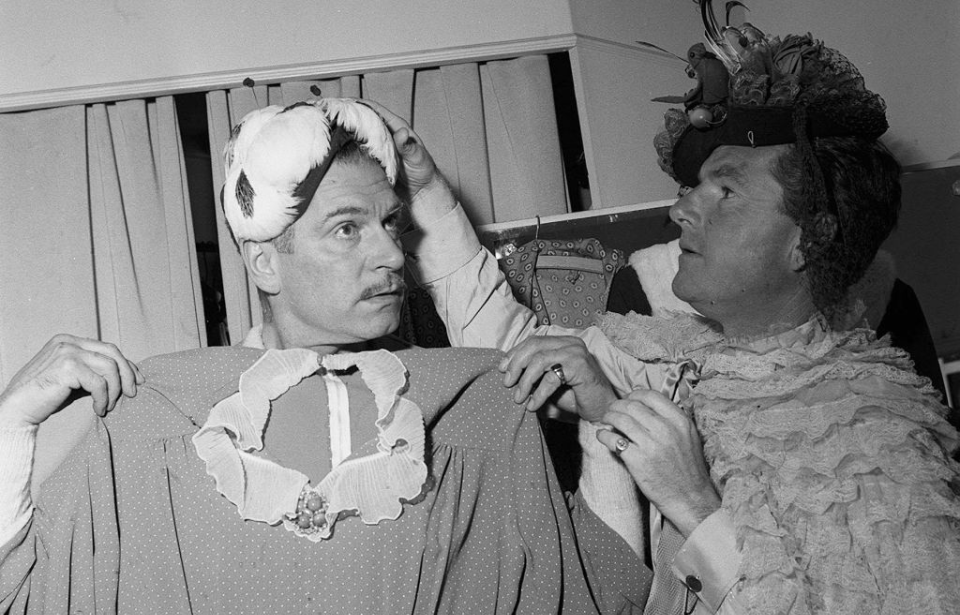There was certainly no shortage of soldier shows during World War II. On the frontlines, where many of these took place, a lack of women led to men taking on the leading roles – both male and female. Even when they no longer had to, they still did, as their drag performances had become an integral part of military life during WWII and served as a way to keep up morale in the darkest of times. These photos offer a glimpse into these shows and the men who thoroughly embraced their roles in them.
A Polish beauty
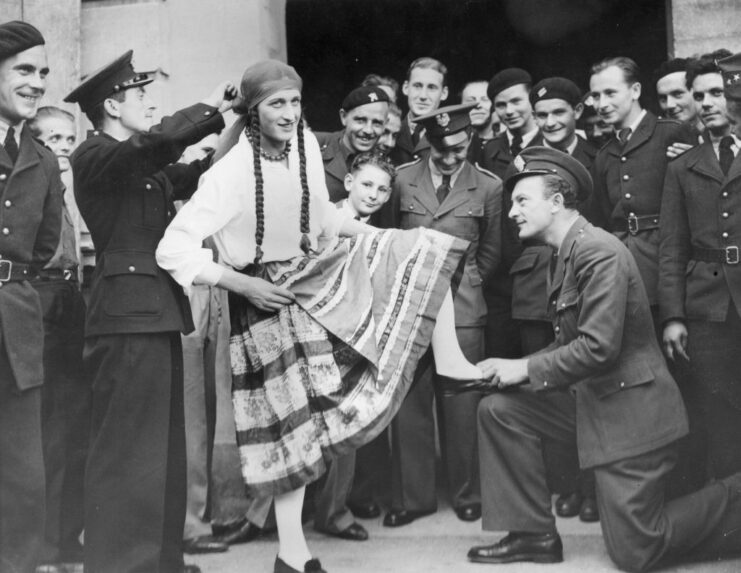
The Polish pilots of the Royal Air Force (RAF) were formidable fighters and, as it turns out, impressive performers. This unknown airman, seen at a base in the west of England on August 12, 1940, wears his female national costume and is one of many who took part in a male choir that was initially formed to entertain their fellow troops. This WWII-era performance was considered good enough for locals to view, meaning several shows were put on.
The costume he’s donning was supposedly part of their show.
This is the Army
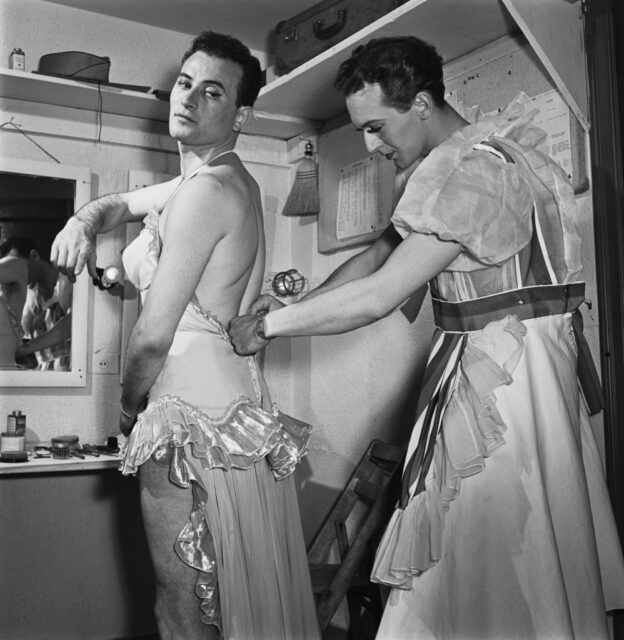
These men are getting into costume for their 1942 Broadway performance of This is the Army. This particular show was put on as a benefit for the Army Emergency Relief Fund and served as a significant morale boost, as well. Irving Berlin wrote the songs, but the US Army produced them.
This is the Army was incredibly popular. Between July 4 and September 26, 1942, they put on a total of 113 shows. They were only supposed to perform for four weeks, but their run was extended to 12!
A lady, a bearded man and a baby
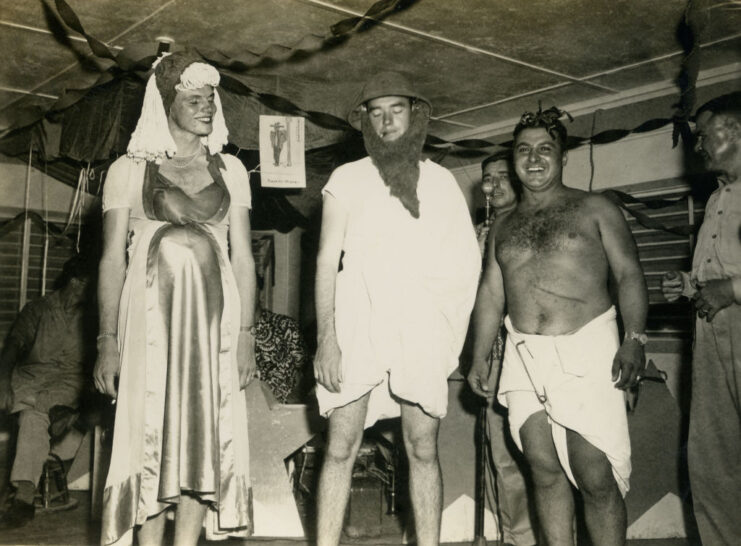
Whatever this WWII-era drag performance is, it certainly didn’t have as big a budget as This is the Army.
This group of unidentified soldiers dressed as a baby, a bearded man and a woman during their 1941 performance. Whatever the show was, you can see how happy it made them.
Prison finery
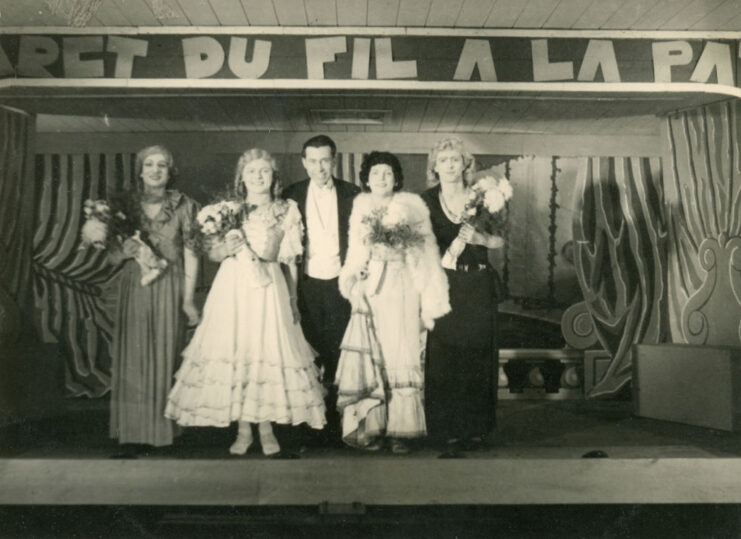
The lovely ladies on this stage are actually French prisoners of war (POWs) being held captive in Germany around 1943. It’s unclear exactly where they are, but they’ve clearly been provided with all the materials needed to put on an impressive show.
It was quite common for POWs to put on shows like this, regardless of which country they fought for. Among the documented accounts are Allied prisoners performing drag ballets at Colditz Castle.
Wartime entertainment
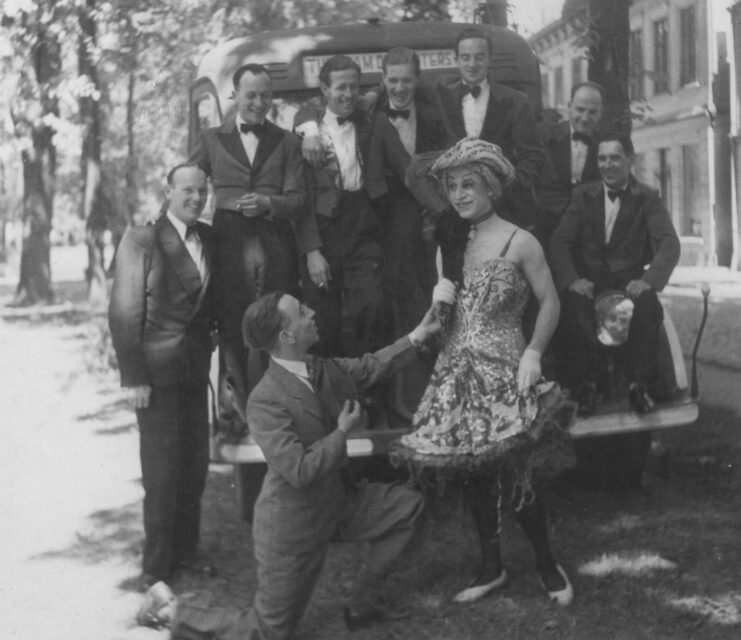
Unlike many other WWII-era performances by different military members, this photo provides no information on who these men are or their reason for dressing in drag. They might be Allied soldiers getting ready for a show, but it’s equally likely that they’re Axis troops.
Drag shows were common on all sides, with numerous German photos emerging after the war, which show the men putting on formal shows and other types of entertainment.
Hansel and Gretel
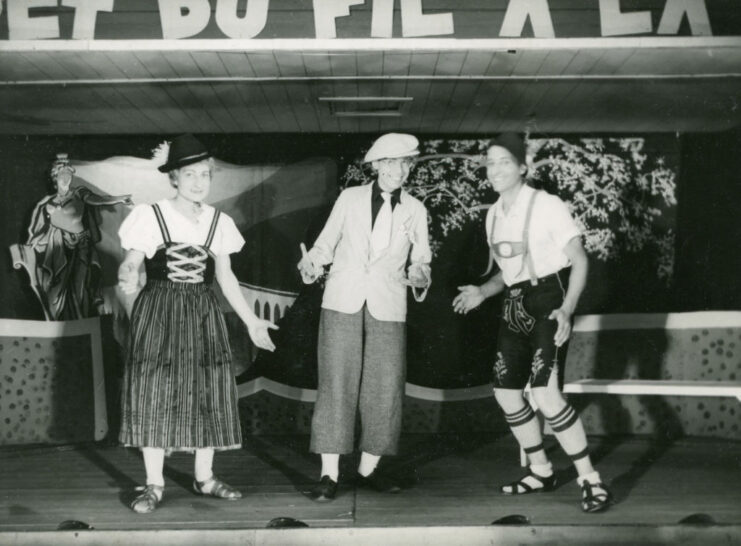
Perhaps performing Hansel and Gretel, perhaps something entirely different, this group of French prisoners of war certainly know how to entertain. This photo, taken in 1943, was captured in the middle of an act (again with elaborate costumes) while these men were being kept captive in Germany.
You can even see that they had a proper stage to perform on, which was likely something they did often.
An elaborate performance
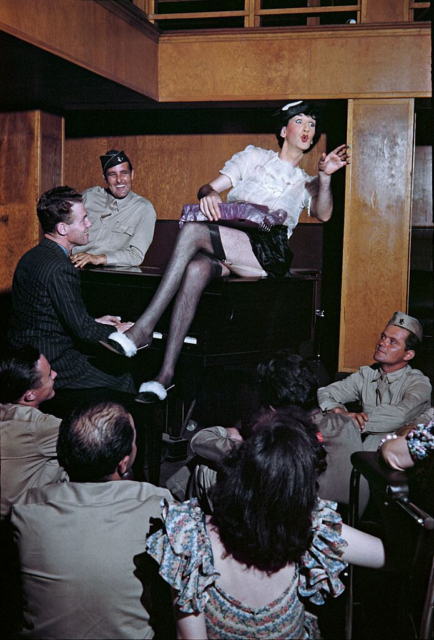
This group of soldiers is certainly enjoying their entertainment while off duty at Fort Bragg (now Fort Liberty), North Carolina. Taken during the height of WWII in 1942, a performer in drag sits on a piano while another man plays. Around them hit a group of fellow soldiers.
It’s unknown who, exactly, is pictured here, but they were likely getting some last entertainment before deploying overseas.
Pucker up
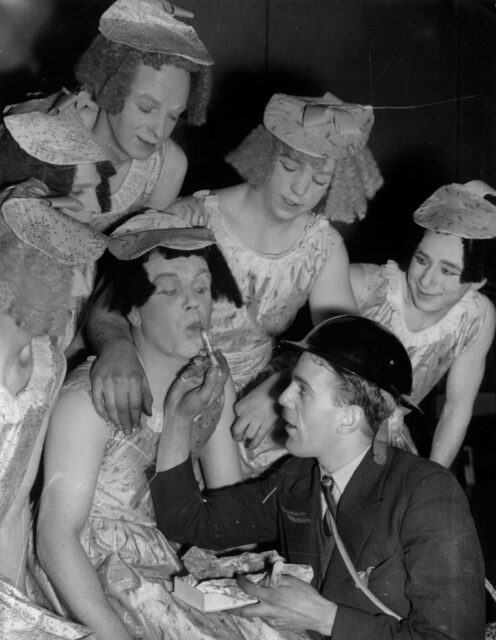
The Americans might have had This is the Army, but the Brits put on their own drag performances during WWII. This photo of a group of Horbury Air Raid Precautions Centre wardens was taken on April 29, 1940. They put together a production called First Aid Follies, designed to make waiting around for air raids much less tedious, while also helping raise money for the boys overseas.
Here, they are having their makeup applied before a dress rehearsal.
Stage Door Canteen
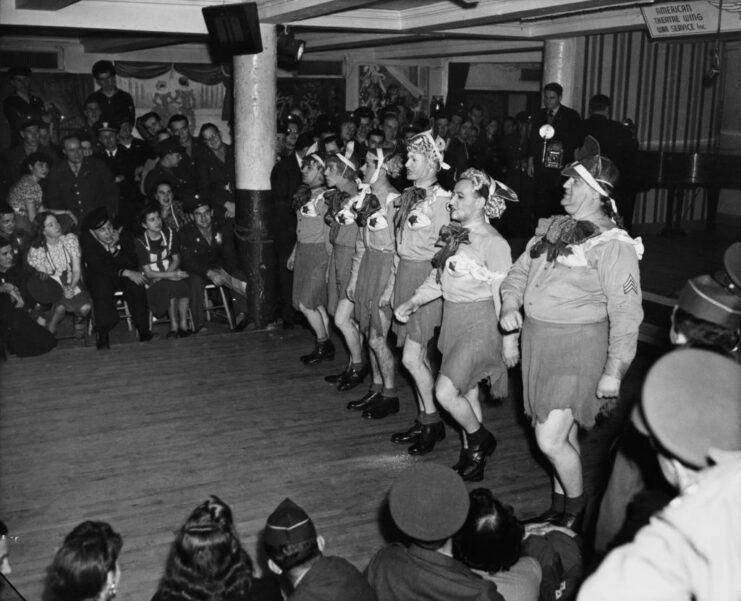
Although the men in this photo are wearing makeshift costumes, their venue is anything but. They’re performing at the Stage Door Canteen, located underneath the 44th Street Theatre in what was once the Little Club.
The American Theatre Wing founded this Broadway hotspot in 1942 as a location to entertain Allied servicemen throughout the war. Most entertainers were unpaid, working just to help keep up morale. This photo was taken on January 20, 1943.
Tin Hats
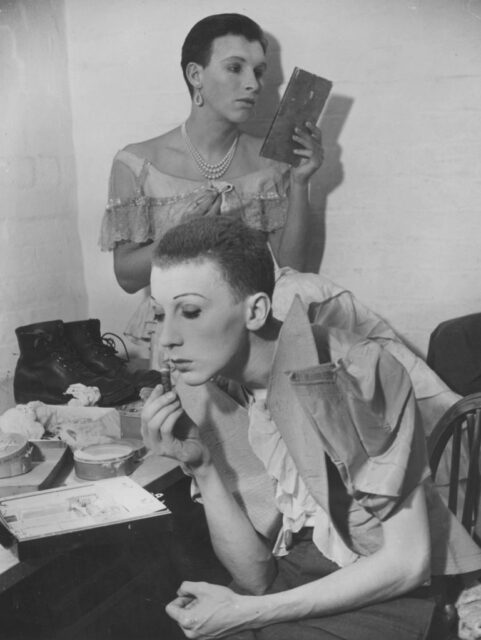
When discussing Allied drag performances during WWII, we can’t forget about our friendly neighbors to the North.
This photo was taken on October 1, 1941 of Pvt. John Heawood and Bill Dunstan of the Canadian Army. They’re putting on their makeup to portray characters Trilby and Trixiepart of The Tin Hats, a cabaret troupe who got together to entertain servicemen worldwide. They were the stars of the show, repeatedly taking the stage to sing a variety of duets.
A slight adjustment
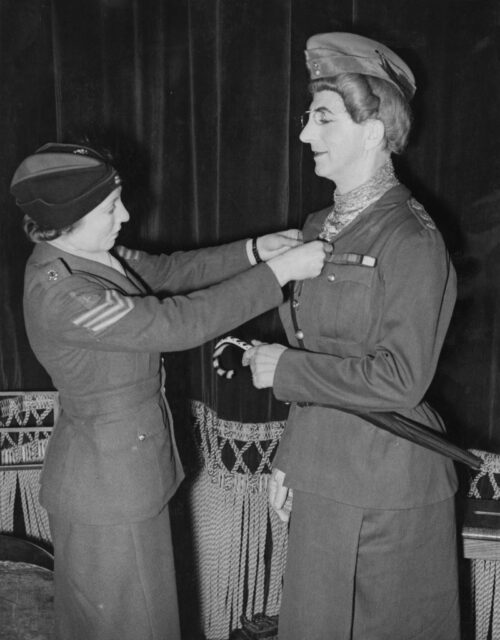
Most pictures of military drag performers show men in elaborate and incredibly feminine costumes: dresses with sequins, feather boas and lingerie. However, English singer Douglas Byng shows that this wasn’t the only way to put on a memorable show. He’s photographed on April 1, 1941, about to take the stage as a female Auxiliary Territorial Service (ATS) officer at a London theater. The show had no name, but was put together to aid the ATS Comforts Fund.
Byng was well-known for his female impersonations throughout his career.
Elegant costumes
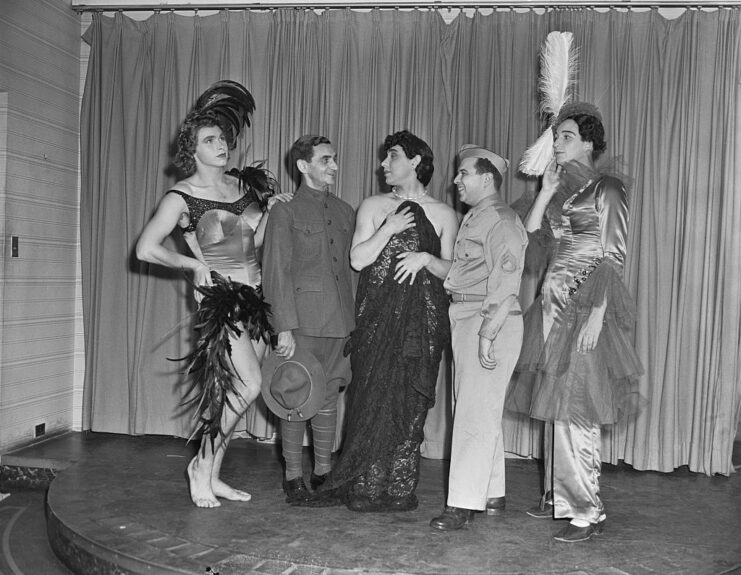
Given the popularity of This is the Army, it’s no wonder there are no shortage of photos from the show.
This particular image captures a number of the leading performers, specifically from the different time periods featured in the production. They can be seen trying on their costumes in New York City. From left to right: Eddie Barclift as Vera Zorina, Irving Berlin as “1918,” Julie Oshen as Gypsie Rose Lee, Ezra Stone as “1942” and Alan Marson as Jane Cowl.
Ready to take to the stage
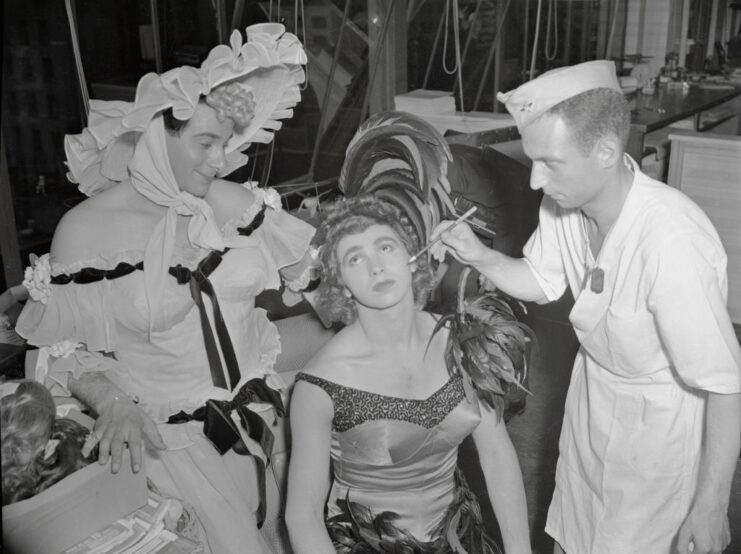
More performers from the show are captured here as their makeup is done to perfection by Pvt. Jack Le Goms, the makeup man for the show. Pvt. Julie Oshen waits patiently for him to be done while Larry Weill watches. Once this is done, their costume will be complete for the first time.
Strike a pose
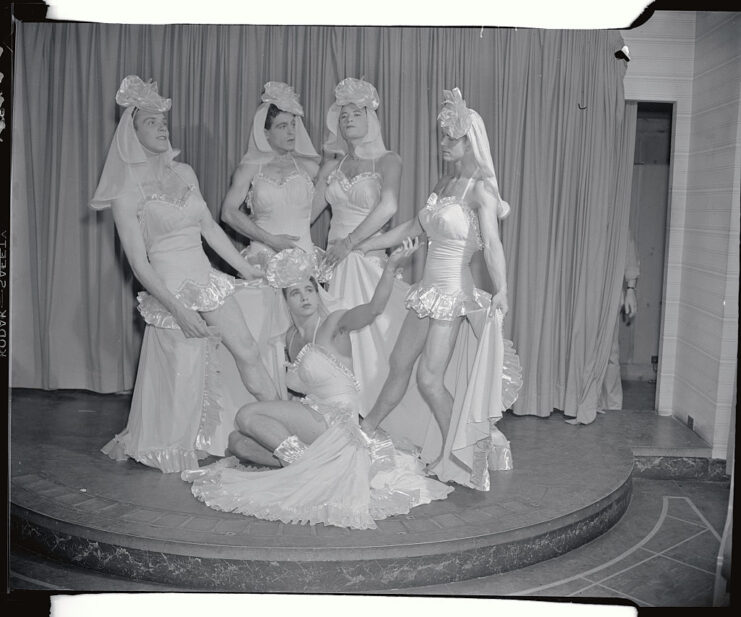
Julie Oshen and Larry Weill weren’t the only ones trying on their costumes for the first time.
From left to right: Pvt. Joe Johnson, Sgt. Robert Sidney, Phil Wernick, Lee Berg and Cpl. Nelson Barclift. They’re considered the “dream girls” of the show – and they certainly know it! They comprised part of the 300-person cast on opening night on August 4, 1942. Sidney and Barclift were also listed as the choreographers for the production.
Chorus gals
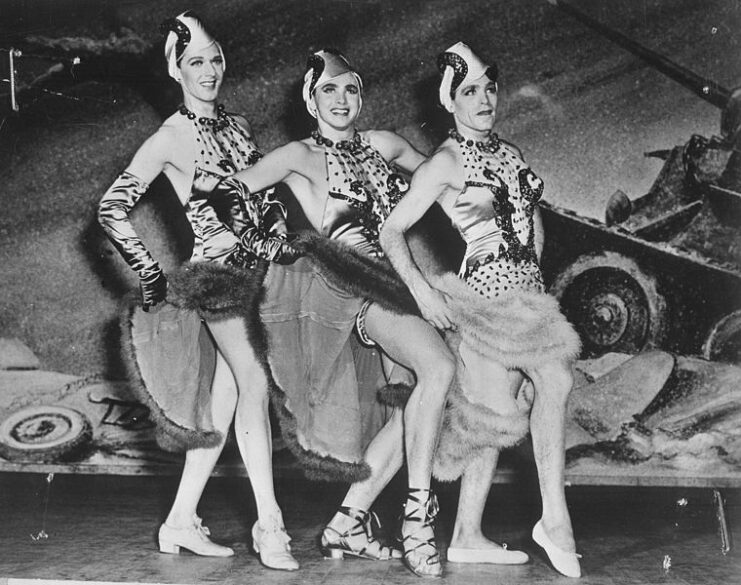
Sadly, the names of these leading ladies are lost to time as they pose for one of the 1942 Broadway shows. As a result of This is the Army‘s success, the show went on tour from 1943-45, first in the United Kingdom, then Africa and locations where the American forces were stationed.
The last performance occurred on October 22, 1945, in Maui, Hawaii.
‘Gang Show’
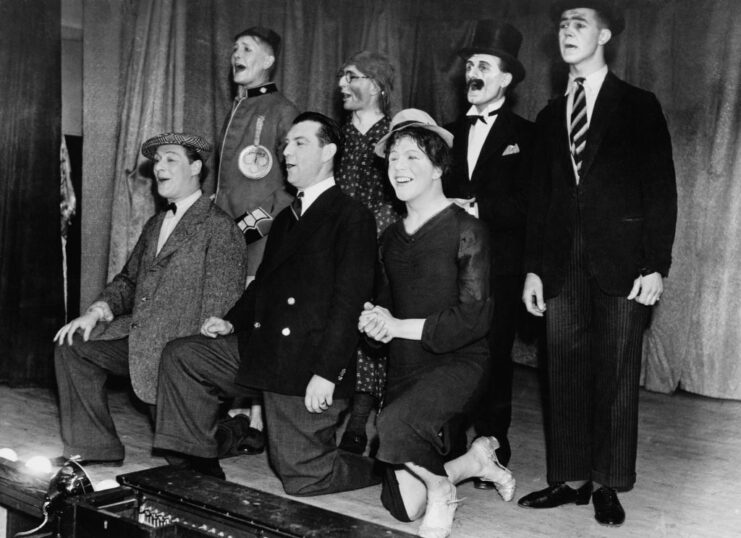
This image captures Ralph Reader, founder of the Royal Air Force (RAF) “Gang Show,” performing with his troupe at a base in January 1941. Having put on similar shows with the Boy Scouts before WWII, he was asked to do the same to keep up morale within the RAF.
More from us: Did This U-boat Sink Herself With One of Her Own Torpedoes?
He was allowed to recruit any men who weren’t aircrew or had particularly useful skills, and a variety of different groups were put together. Those selected traveled throughout the UK, Italy, North Africa and the Far East, putting on shows for their comrades in service. Since this was an RAF-sanctioned production, they put a significant effort into traveling to remote outposts that civilian shows wouldn’t be able to visit.
